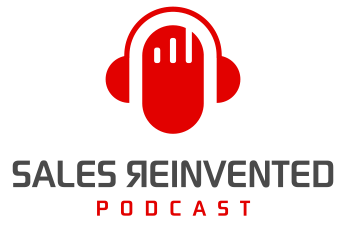Episode #410: Tom Bertrand

Meet
Tom Bertrand
Tom is the BDR Lead at Reachdesk, Rated #42 SDR Leader in SaaS who specializes in cold calling.
Our Mission Is To Change The Negative Perception Of Sales People
Our Vision Is A World Where Selling Is A Profession To Be Proud Of
Cold-calling is the fastest way to build rapport and get answers—if you know what you’re doing. If you’re still struggling with cold-calling and feeling ineffective, Tom Bertrand has some great strategies you can quickly learn to transform your results. Sometimes, it takes doing the unexpected to get the results you’re looking for. Listen to learn more.
Outline of This Episode
- [1:02] What is cold-calling? Is it still relevant?
- [1:16] The art and science of cold-calling
- [2:01] How Tom prepares for a cold-calling session
- [3:30] What are hooks and triggers?
- [4:31] Effective opening lines and techniques
- [5:34] How to keep the conversation engaging
- [7:30] Tools, technology, and metrics
- [9:27] Tom’s top cold-calling dos and don’ts
- [12:01] How Tom handles objections/rejections
How Tom prepares for a cold-calling session
Preparation is often overlooked. On Friday, Tom gathers information on the top 10 accounts he wants to work on the following week. He’ll research their hooks and triggers. Are they hiring? If they are, what is the job expectation? What are they looking for? What are the challenges they’re trying to overcome?
If Tom learns those things and speaks to them on his call, it will “hook” his prospects and gain their interest. There are numerous hooks and triggers you can research to connect with your prospects.
On Monday, he blocks out time for cold-calling sessions. His whole team sits in a room together. Why? Hearing how everyone else approaches their cold calls allows you to learn from each other and adapt your approach if necessary.
Effective opening lines and techniques
One of the lines Tom uses is “Hey, it’s Tom from ReachDesk, how have you been?” Most people don’t like using something that simple but it works. More often than not, Tom gets a, “I’m doing good, how are you?” It builds rapport with the prospect.
Tom usually follows with, “You’re the first person to ask me that today, I really appreciate it!” Sometimes the prospect is surprised and you’ve broken down their walls. It takes you from being a salesperson to being a human being.
Tom also likes to say “I’d rather be on a beach rather than cold-calling but here we are.” That’ll usually get a laugh and lower the person’s resistance and build rapport.
Tom’s top cold-calling dos and don’ts
What should you do? What should you avoid?
- Do your research: You’ll be more excited to speak to those prospects. It will make the whole experience better and you’ll come across as a trusted advisor.
- Take your time. Pause and be in the conversation. The faster you speak, the more uncomfortable the prospect is. Be in control of the call.
- Set time aside for power hour and make phone calls together. Make it fun and get everyone excited to overcome challenges. Play Bingo!
- Don’t spam different prospects with the same pitch. Tailor your conversation to who you’re speaking to and it will make a world of difference.
- Don’t use a script, it takes away from the conversation and you sound like a robot. Be in the conversation and treat them like a friend.
Tom believes you can have a structured conversation without using a script. You use your opener/pattern interrupt, introduction, questions, pitch, and close. But when you script, you’re overly focused on what you have to say versus having a conversation.
How Tom handles objections/rejections
If someone says, “I’m not interested,” you can level with them and say, “It seems like you hate taking cold calls as much as I hate making them. It seems like I’ve caught you at the worst time, you must hate me right now.” Because you’re doing the extreme, they often backpedal and say “Oh, no…” or “I really do hate getting cold calls.”
You can say, “I appreciate that. This is research-driven and hopefully something different than what you usually get. Do you mind if I give you that context and then you can decide if it makes sense to continue the conversation? Does that sound fair?” It often means Tom continues the cold call.
Tom shares more great ideas in this episode, don’t miss it!
Connect With Paul Watts
Audio Production and Show notes by
PODCAST FAST TRACK
https://www.podcastfasttrack.com
Learn More About Tom Bertrand
What was a pivotal moment or experience in your career that shaped your approach to cold calling, and how did it change your perspective or strategy? I started out making 100 cold calls a day as a spray and prey approach, speaking to anyone who would speak to me, which got me nowhere. I learned about human psychology, combined with a super targeted approach with companies that are within my ICP, with a different script based on the persona I speak to. This got me booking 5+ meetings on a call a week.
Can you share a specific tactic or approach you’ve used in cold calling that significantly increased your success rate? Please provide a brief example or case study. The first 30 seconds are vital, this is where you have the chance to be like every other salesman, or break down the barrier and be human this is all done in your pattern interrupt. My pattern interrupt sounds like this “It’s Tom from Reachdesk, how have you been”, Prospect “I’m okay, how are you” Me: “To be honest, you’re the first person to ask me that today, I appreciate ahaha” You’ve broken down the barrier, now for the opener. “I appreciate I’m calling you out of the blue here, but am I okay to give you some context as to why I’m calling, and then you can decide if it makes sense to continue the conversation, sound fair enough?” Permission-based over time based!
Cold calling often comes with its set of challenges and rejections. Can you share a particularly tough challenge you faced while cold calling and how you overcame it? I use to have crippling anxiety about calling, I hated every minute of it. But then I did my research on how to make a col call. I learned about human psychology, how to overcome objections, and realised the real challenges my prospects were facing so I could act like a trusted advisor when talking to them. That’s what took me from putting the prospects on a peddle stool to being an expert cold caller.
What are the top three tools or resources (e.g., software, books, training programs) you consider essential for someone looking to improve their cold calling skills and outcomes? Listening to Way of the Wolf by Jordan Belford to structure your cold call, Listening to Chris Voss for Objection handling, and Listening to Jeremy Miner for Discovery and questioning. You can’t go wrong!
How do you foresee the practice of cold calling evolving in the next few years with advancements in technology and changes in buyer behavior? What advice would you give to sales professionals to stay ahead of the curve? Prospects engage with a salesperson 73% of the way through the buying journey and this is forever increasing. You need to give your prospect an experience and that first point of call should be the phone. Cold calling is an art, as AI starts to take over, we stop treating prospects like people. You can never beat a 1 on 1 human conversation which gives that prospect an experience when first learning about your product/service.
Share This Episode, Choose Your Platform!
